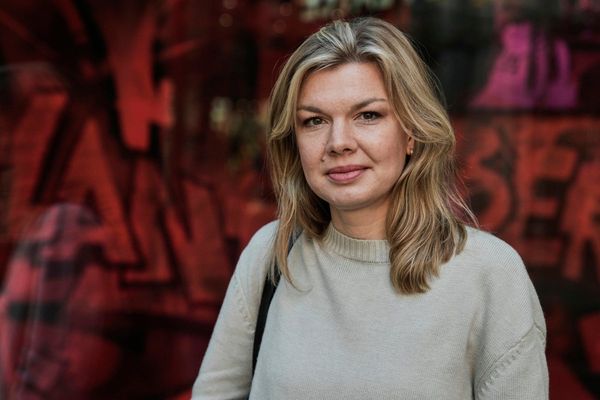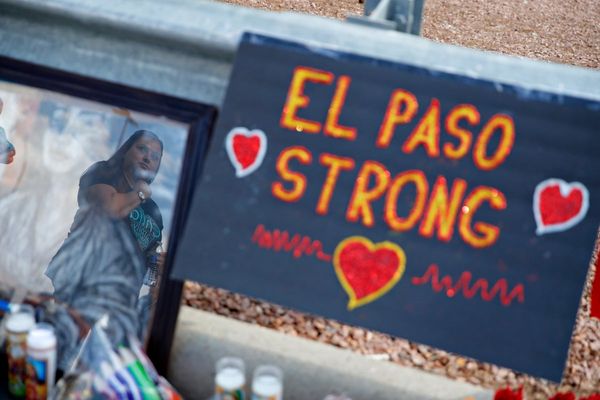
The American photographer Daniel Kramer, who has died aged 91, was just beginning his professional career when by chance he caught a young folk singer’s performance on the Steve Allen Show on 25 February 1964. Until that moment, Kramer had never heard of Bob Dylan, but the 22-year-old singer’s stirring rendition of his stark protest song The Lonesome Death of Hattie Carroll caught his attention.
“He may have had a guitar in his hand, but the lyrics were poetry,” Kramer later recalled of Dylan’s delivery. “And, he had to be very brave because, if you said things like that you could get shot.”
Kramer was so impressed that he began repeatedly calling and mailing the office of Dylan’s manager, Albert Grossman, with requests to photograph the singer. His persistence finally paid off after six months when Grossman himself answered the phone and, to Kramer’s surprise, gave him the go-ahead for a photoshoot. It took place a few days later at Grossman’s house in Woodstock, upstate New York, the planned one-hour session stretching to five hours.
In monochrome tones, Kramer captured Dylan posing on a swing on Grossman’s front porch, deep in concentration during a game of chess with a friend at a local cafe and, in one mischievous shot, pointing one of Kramer’s own cameras back at him. Months later, he accompanied Dylan on tour, creating memorable shots of the singer on and offstage, including one where the singer is lifted off his feet by Joan Baez following a triumphant concert at the Lincoln Center, New York.
With hindsight, the photographs are an intimate document of a brief interlude of calm before the storm of creativity and controversy that would follow. It was Kramer’s great good luck to meetDylan when the singer was on the cusp of a surge of creativity that would see him dramatically reinvent himself and, in the process, redefine what popular music could do.
Kramer was in attendance once again in January 1965 to document the New York recording sessions that produced the Bringing It All Back Home album, released in March of that year. It marked Dylan’s controversial move from an acoustic to an electric sound, and that shift was also reflected in Kramer’s cover image.
It features a more consciously stylish Dylan staring intently into the camera, as Grossman’s glamorous wife, Sally, lounges, cigarette in hand, on a sofa behind him. The pair are enclosed by a blurred circle of light that renders everything on the edge of the photograph indistinct. “People think I used Vaseline to create that circular image,” Kramer said. “That’s not what I did. It’s two different pictures on one film. One is moved, and one is not. I wanted to simulate a record spinning or the universe of music.” Dylan, Kramer’s image intimated, was now at the centre of his own, singular, creative universe.
Bringing It All Back Home was Kramer’s first experience of shooting an album cover. From the cat sitting on Dylan’s lap to the plethora of symbolic objects scattered around him – including albums by Lotte Lenya, Robert Johnson and Ravi Shankar, a fallout shelter sign, various artworks and magazines – the cover image echoes the music therein by signifying a brave new beginning.
As Kramer later said of Dylan’s transformation, “On the first four albums, he’s a folk singer. He’s in folk singer clothes … On Bringing It All Back Home, he’s a prince in his blazer and his beautiful cufflinks, sitting with this beautiful cat and a ravishingly beautiful woman behind him in a red dress. It was a change. Everything was changing.”
In August of the same year, Kramer also shot the cover for another classic Dylan album, Highway 61 Revisited. This time, the session was more impromptu, with Kramer capturing the singer as he sat on a stoop of the building where Grossman lived in Gramercy Park, New York, wearing a Triumph Motorcycles T-shirt and a multicoloured shiny shirt.
The photo session, which lasted around 20 minutes, took place just after the recording of Dylan’s epochal song Like A Rolling Stone, and again the image reaffirms his defiant creative reinvention. “He looks hostile or at least moody,” Kramer said later. “He seems to challenge me – or whoever he looks at – ‘What are you going to do about it, dude?’”
Born in Brooklyn, New York, Daniel was the eldest of three children of Ethel (nee Berland), a hospital administrator, and Irving Kramer, who worked on the docks. Irving was also an amateur film-maker in his spare time, and may have been a formative influence on the young Daniel, who gravitated to photography early on. Aged 14, he hosted a solo exhibition of his own work at his junior high school. He later joined the army’s Military Police Corps for a time before becoming a student at Brooklyn College.
He was mentored for a time by the esteemed photojournalist W Eugene Smith, a pioneer of the editorial photo essay, and worked as a studio assistant for both Philippe Halsman and Diane Arbus before embarking on his solo freelance career. He had not long established his own studio when he made the fateful trip to Woodstock to photograph the singer who had so fascinated him on a TV variety show.
Although he made memorable portraits of other celebrities, including Muhammad Ali, Janis Joplin, Johnny Cash and Norman Mailer, Kramer’s name was for ever associated with Dylan.
In 2016, he published a 300-plus-page book, A Year and a Day, which included many previously unseen images of the artist. According to Kramer, it contained only a fraction of the photographs he shot during their fruitful creative partnership, which ended a year and a day after the pair first met.
In late August 1965, Dylan performed at Forest Hills Stadium in Queens, New York. It was the first time he had played an entire gig with an electric band and Kramer captured Dylan at the soundcheck, in shades and holding his electric guitar, with an almost empty stadium behind him.
He looks preoccupied, maybe even a little nervous, his alert demeanour suggesting someone prepared to go to war with his audience for the sake of his art. It is a long way from the easygoing atmosphere that Kramer had captured just a year before in the leafy environs of Woodstock.
Back then, as Kramer later put it, they were “just a couple of guys taking some pictures that day to see what we could do”. What Dylan went on to do in the following months would alter the course of popular music. Kramer was there to document him do it and, in the process, photograph his way into history.
Kramer married Arline Cunningham in 1968. She died in 2016. He is survived by a niece and three nephews.
• Daniel Kramer, photographer, born 19 May 1932; died 29 April 2024







